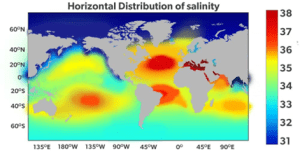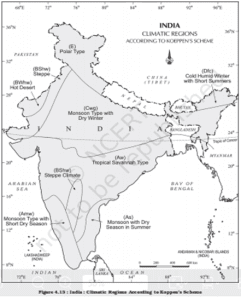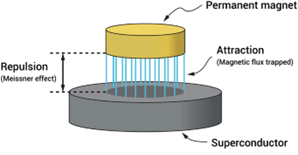THE CONTEXT: The SC has upheld the government’s decision to abrogate Article 370, which conferred special status on the erstwhile state of Jammu and Kashmir and said steps should be taken to conduct elections in the assembly by September 30, 2024. However, it has received criticism and opposition termed the “manner” in which the abrogation of Article 370 took place as “unconstitutional.”
REASONS FOR ABROGATION:
Temporary Provision: Article 370 is titled “Temporary provisions with respect to the State of Jammu and Kashmir”. This suggests it wasn’t meant to be permanent.
Uniformity: Removal can lead to the uniform application of Indian laws to Jammu & Kashmir, integrating it fully with India.
Development & Growth: It was believed that removal can boost the region’s development, as it would get equal attention and opportunities like other states.
Limited Integration: It was argued that Article 370 has hindered the full integration of Jammu and Kashmir with the rest of India. They believe that the provision has perpetuated a sense of separatism and prevented the region from fully embracing its Indian identity.
ISSUES RAISED BY OPPOSITION:
Federal interest: In upholding the removal of Jammu and Kashmir’s special status, the Supreme Court of India has imperilled the rights of States. It represents not merely judicial deference, but a retreat from the Court’s known positions on federalism, democratic norms and the sanctity of legal processes. The most potent attack on federal principles is the Court’s conclusion that Parliament, while a State is under President’s Rule, can do any act, legislative or otherwise on behalf of the State legislature. This alarming interpretation undermines the basic feature of the Constitution as enunciated by the Court itself and may have grave implications for the rights of States.
Violating constitutional provisions: Article 370, whether it was temporary or not, is a provision of the Indian Constitution. As per, Article 368 any provision of the Constitution has to be amended by the Parliament with a requisite majority. But abrogation was not done in accordance with that is termed as invalid.
Undermined historical context: The Instrument of Accession was like a treaty between two sovereign countries that had decided to work together. The SC verdict fails to appreciate historical context and undermines constitutional procedure by striping Kashmir of its special status and bring it on a par with other States.
Did not consult elected representative: The government seems to have acted in a mala fide manner by imposing President’s Rule for the intended abrogation of special status without the need to involve any elected representative from J&K. As, in the reorganisation of the state, the Presidential order also requires the concurrence of the government of the state. However, since Jammu & Kashmir is currently under Governor’s rule, the Governor’s concurrence is deemed to be the government’s concurrence.
THE WAY FORWARD:
Preserving Regional Identity: One of the primary rationales behind Article 370 was to respect and preserve the unique identity, history, and culture of the state of Jammu and Kashmir. There should be adequate steps by the union government to address the same.
Upholding Democratic Principles: Article 370 exemplifies India’s commitment to democratic principles by respecting the choice of the people of Jammu and Kashmir to have their own constitution and laws. There is a need to uphold democratic principles emphasizing the importance of a government accountable to the people it serves.
Safeguarding Federal principles: The state is an integral part of India with unique privileges and autonomy. There is a need to safeguard and enhance the autonomy and rights of the state the face of increasing centralization and interference from the Centre.
Addressing Historical Context: The inclusion of Article 370 was a response to the specific historical context of Jammu and Kashmir’s accession to India after independence in 1947. The provision was a result of negotiations between the leaders of the state and the Indian government to address the concerns and aspirations of the people of Jammu and Kashmir. This historical context should be kept in mind when taking any step that is irreversible in nature.
THE CONCLUSION:
The recent SC verdict though rightly upheld Indian sovereignty over J&K, undermines federalism and democratic processes to a frightening degree. There is a need for holistic approach for a successful transition, combining economic growth, inclusive governance ensuring a brighter future for the region while upholding its sovereignty and integrity.
PREVIOUS YEAR QUESTIONS
Q.1 To what extent is Article 370 of the Indian Constitution, bearing marginal note “Temporary provision with respect to the State of Jammu and Kashmir”, temporary? Discuss The future prospects of this provision in the context of Indian polity. (2016)
Q.2 The banning of ‘Jamaat-e-islaami’ in Jammu and Kashmir brought into focus the role of over-ground workers (OGWs) in assisting terrorist organizations. Examine the role played by OGWs in assisting terrorist organizations in insurgency affected areas. Discuss measures to neutralize the influence of OGWs. (2019)
MAINS PRACTICE QUESTIONS
Q.1 With the verdict on Article 370 petitions, the Supreme Court (SC) has drawn to a close a historical legal battle that has recast Jammu and Kashmir’s constitutional relationship with the Union of India. Comment.
SOURCE: https://www.thehindu.com/opinion/editorial/ominously-anti-federal-on-the-supreme-courts-judgement-on-article-370-and-jks-special-status/article67628150.ece



